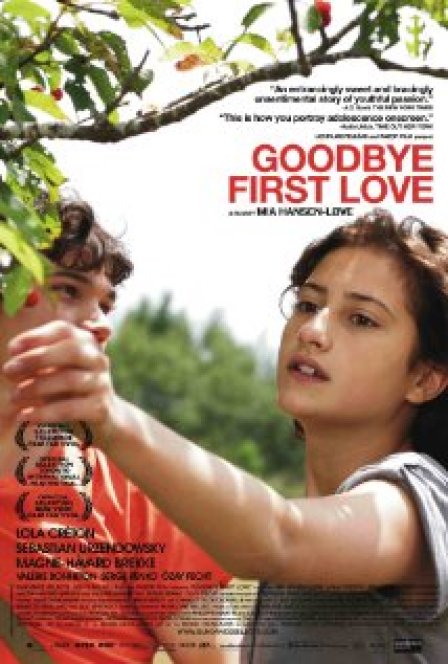Just over a decade later, the idea of looking back to the year 1999 with nostalgia feels somewhat absurd. Yet if we pause to think about it, the seeming arbitrariness of this fin de siècle moment fades away. In 1999, sending an e-mail still had the connotations of nerd or office culture, reserved for those with the corporate power of a T1 line or the patience and lack of a social life to deal with dial-up. What once appeared so remote now can be done by 13 year olds standing on street corners. As the banality of the once-future permeates our culture, have we changed or haven’t we? That seems to be the question director Mia Hansen-Løve circles around in Goodbye First Love (the French title, Un amour de jeunesse, more closely translates to “A Love of Youth”) through the personal changes in her young protagonist’s life.
In the Paris of 1999, Camille (Lola Créton) is 15 and hopelessly in love with her boyfriend Sullivan (Sebastian Urzendowsky), even though there doesn’t seem to be much future in their relationship. They are both young and impulsive, a fact that Hansen-Løve makes very evident. Sullivan also plans to drop out of college to travel to South America, leaving Camille in tearful limbo. Her impulsiveness leads her to a half-hearted suicide attempt once Sullivan’s letters from abroad stop trickling in, after which her father urges her to move on. A few years later, she has. Now working part time and studying to become an architect, she eventually starts a new relationship with her older mentor, a Norwegian named Lorenz (Magne Håvard Brekke). Yet this forward progress is halted when Sullivan returns to her life. Is she ready to embrace her adult self, or is she still the melancholic romantic of her youth?
Hansen-Løve carefully layers symbols of change throughout the film’s intimate narrative. In the world of 1999, Camille checks her mailbox every day, waiting for letters to arrive. In the scene in which her father advises her to “turn the page,” Camille is reading a book by Le Corbusier, foreshadowing her future as an architect, while alluding to Corbusier’s own zealous embrace of futurism. In the next cut, we see Camille literally tear off the page on a calendar, informing us of the passage of time. In this same scene, Hansen-Løve shows Camille sitting by a computer, the first instance of such technology. Camille has visibly changed: she has cut her hair short, which Sullivan forbade her to do in the film’s opening, and we soon see her in a work uniform. Interestingly, her father has also heeded his own advice, turning the page on his marriage for a younger woman and leaving Camille and her mother to live on their own. His new girlfriend is described as “quiet,” like Camille, while Camille’s next boyfriend is a sort of father figure, adding a Freudian dimension to the film’s rumination on the past and memory.
In the first half of the film, “the world of 1999,” there’s not even a cellular phone; indeed, the film presents a consciously idyllic narrative, utilizing two different montages of the French countryside. There is also a recurring image of unfinished Roman and Gothic carvings of male heads; a reductive feminist reading of these might suggest they represent Sullivan’s immaturity in their relationship, but more accurately, they seem to reflect that both Camille’s and Sullivan’s characters are in flux, as well as serving as emblems of the past that bleed into the promise of the future. Yet Sullivan’s re-entrance is harbingered by technology: he sends Camille a text message. Still, when we actually encounter him again, he is exactly as before physically. What’s more, his final message to Camille is a good old-fashioned letter sent to her former address. The film’s ending hints at ambiguity towards both the past and future: Camille’s hat, a present from Sullivan in an earlier scene, is lifted by the wind into a river just as Hansen-Løve cuts to Camille entering the river to swim. Is she swimming after the hat or simply swimming for herself? There’s no clear answer, and this feels like the point: Hansen-Løve simply wants the viewer to consider what it truly means to change.

